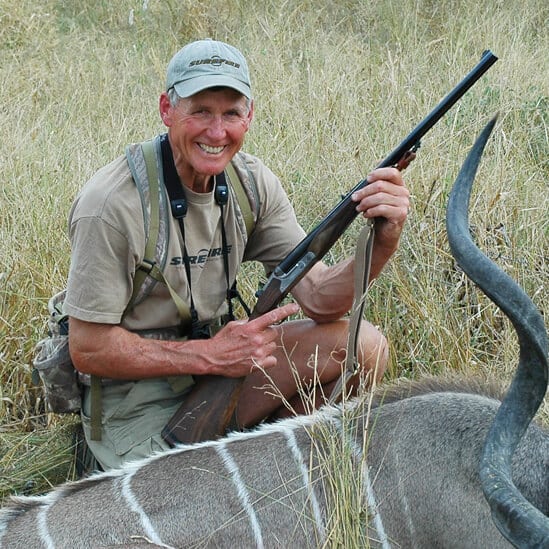Secret to Offhand Accuracy: Aim with Your Feet!
October 3rd, 2022
8 minute read
“The young man nervously raised his rifle and fired…. Instantly the buffalo wheeled and charged us at terrible speed…. With admirable coolness, Fay [fired twice. Then she] threw herself into her lover’s arms. With the two of them locked in a close embrace on the narrow trail, I couldn’t get around the idiots to shoot. The bull was almost on us [when] I managed to force the barrel of my [.475 between them]. The bull came crashing down, throwing foam and blood over Fay’s trousers….”
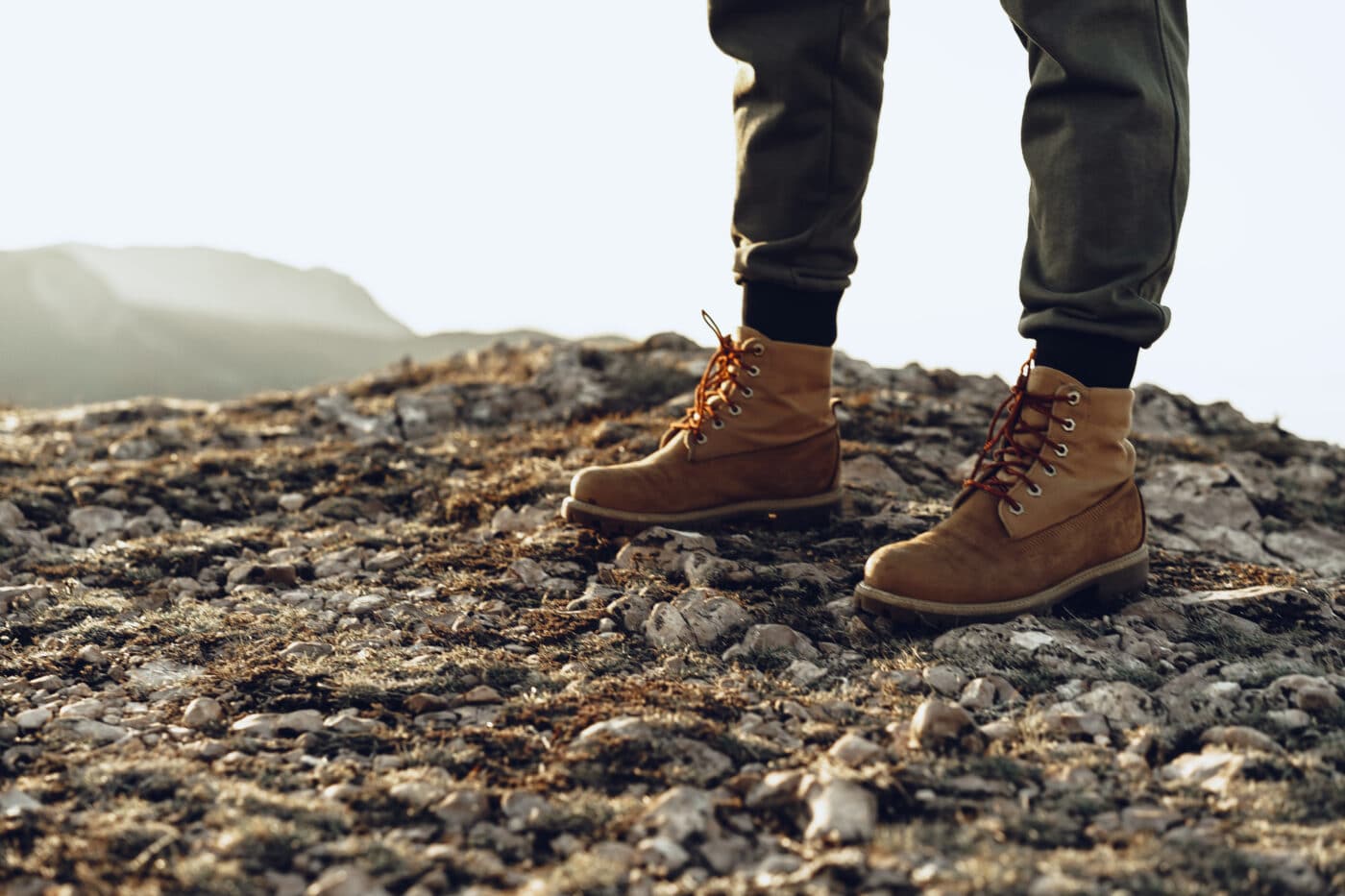
In pre-war Kenya, John Hunter often had to fire quickly, offhand. Errant shots could bring lethal penalties. Of a rhino encounter, he wrote:
“A bullet from my right barrel hit him above the brisket. He never flinched …. The [next] shot hit him fairly below the ear, and he went down. At the same moment [another rhino] tore past … my scout hanging on his horns. [It was] almost impossible to deliver a killing shot without hitting the boy. [But not firing could doom him too.] I fired for the rhino’s shoulder. The animal dropped and the boy shot off his head like a rider whose horse has refused at a jump….” Anxious moments later, he found the lad intact.
Whatever the stakes, every offhand shot starts before you pull the trigger, before you aim. Good or bad, it’s slave to your footprint. A bullet goes where your feet direct.
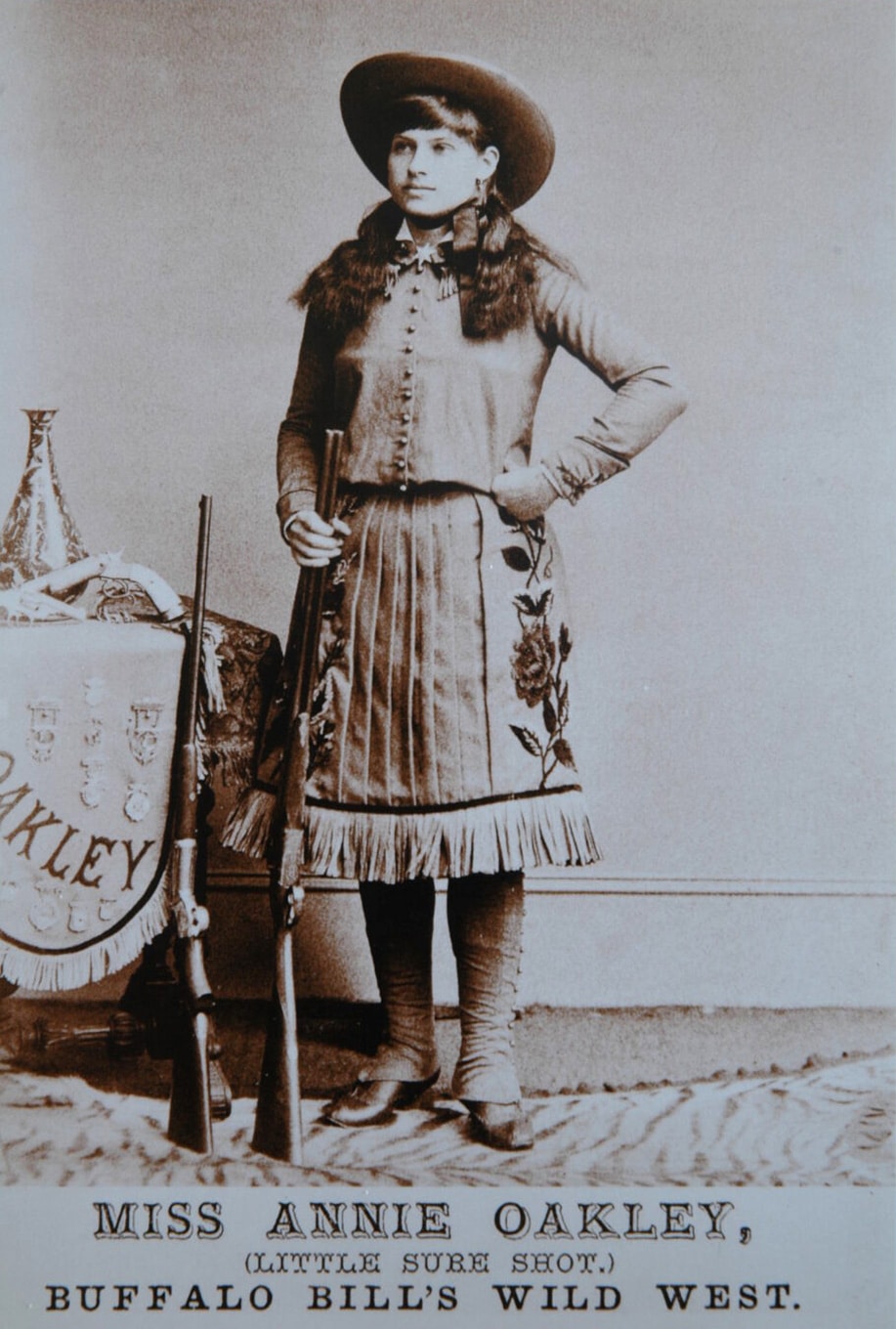
No one avoids offhand shots more assiduously than I. The more contact with Mother Earth, and the lower my center of gravity, the better. Prone is best. Denied a lizard’s-eye view, I sit. Kneeling, a bit more wobbly, brings sight-line and bullet path over higher brush. Offhand is an abominable option, as it permits only two points of ground contact and jacks center of gravity well above belt level. About all you can say for offhand is that it’s fast. It’s acceptably accurate only when you’ve positioned your feet so the rifle’s natural point of aim — where the rifle points when you aren’t pressuring it — is on target. Your body will naturally relax at the shot. If you’ve forced it on target, relaxing sends the bullet off the mark. When natural point of aim is on target, the rifle has no reason to move elsewhere at the shot.
The Foundation
“Get your feet pointed right, and the rest is as easy as falling off a log,” insisted Francis Sell, who still-hunted blacktail deer in thick Northwest cover. Falling off a log requires less practice, but he’s right to say good offhand shots proceed from the earth. Since the advent of repeating rifles, exhibition shooters had owed much to footwork to hit aerial targets and wow pie-eyed spectators. In my youth, Herb Parsons worked his magic over a table of assorted firearms.
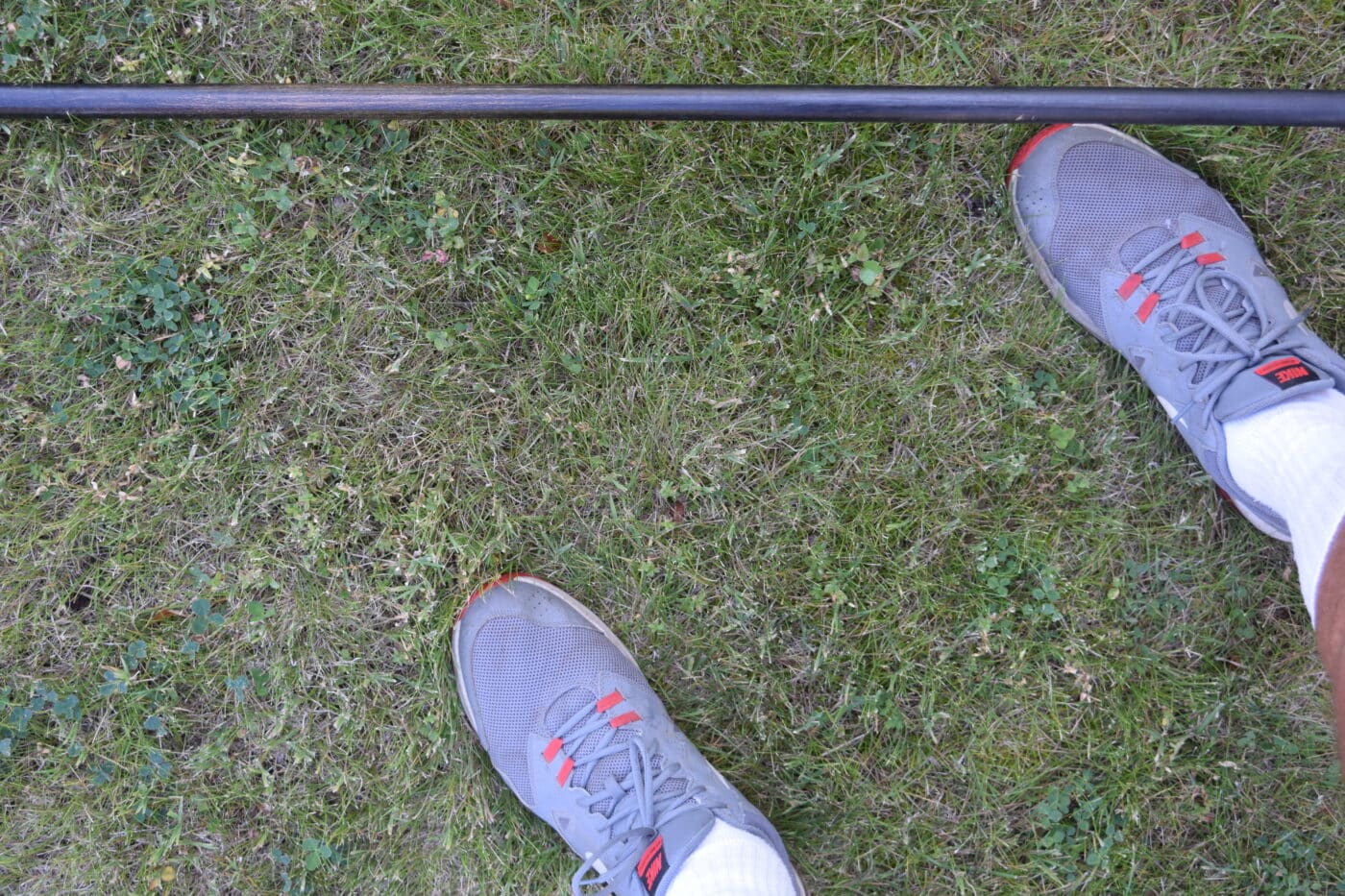
Casually he’d chat up the crowd while tossing various objects aloft and blowing them apart with whatever came to hand. He’d hurl oranges pell mell, pulp them with bullets from a .30-30. Chattering as fast as he shot, he’d bend over, toss a handful of eggs between his legs, whirl and scramble all with a pump shotgun before any hit the ground. Stationary marks got no mercy. He’d drain a Winchester .351’s 10-shot box from the hip, dicing 10 clay targets set on edge. “They aren’t hard to hit, folks,” he’d laugh, “just easy to miss!”
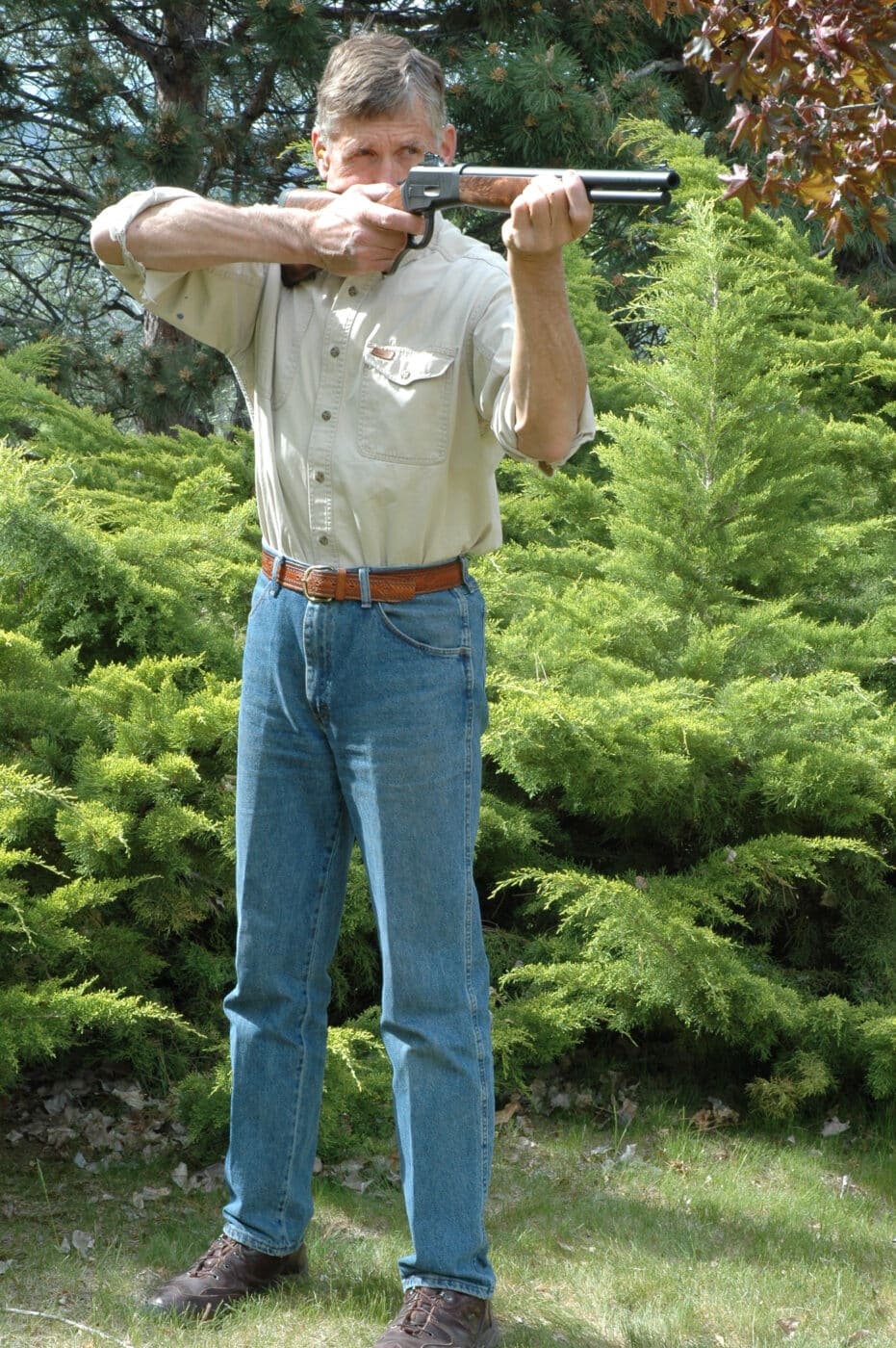
Herb hunted with Hollywood stars Clark Gable, Roy Rogers and Andy Devine. He did the stunt shooting for Winchester ’73, starring Jimmy Stewart. Waterfowling, he liked small-bore guns. On one hunt with Winchester’s Model 42, he folded ducks so fast that his partner never had a chance. At last, Herb put the .410 pump aside. “Your turn,” he grinned. A hunting guide observed: “That man was a machine. He never missed.” On July 19, 1959, during hernia surgery, Herb Parsons suffered a blood clot. He was 51.
Yes, Parsons was gifted. So too predecessors Annie Oakley, B.A. Bartlett and Ad Topperwein. In 1907, with Winchester Model 1903 .22s, Ad splintered 72,491 of 72,500 tossed 2 ¼-inch wooden blocks. Half a century later Tom Frye took a run at that record with a Nylon 66. Of 100,010 thrown blocks, he missed six. Beyond talent, though, these shooters stood so the rifle pointed naturally, if briefly, at the target. Timing completed the effort.
Considered Approaches
Compared to aerial targets the size of tennis balls, the vitals of stationary or slowly moving game are ridiculously easy to hit. Most field shots can also be taken from steadier positions than offhand. When hunting, I look as much for places to flop prone as for animals to shoot. But you cannot predict how your next chance will come. Despite my best efforts, three of my last four elk were taken offhand.
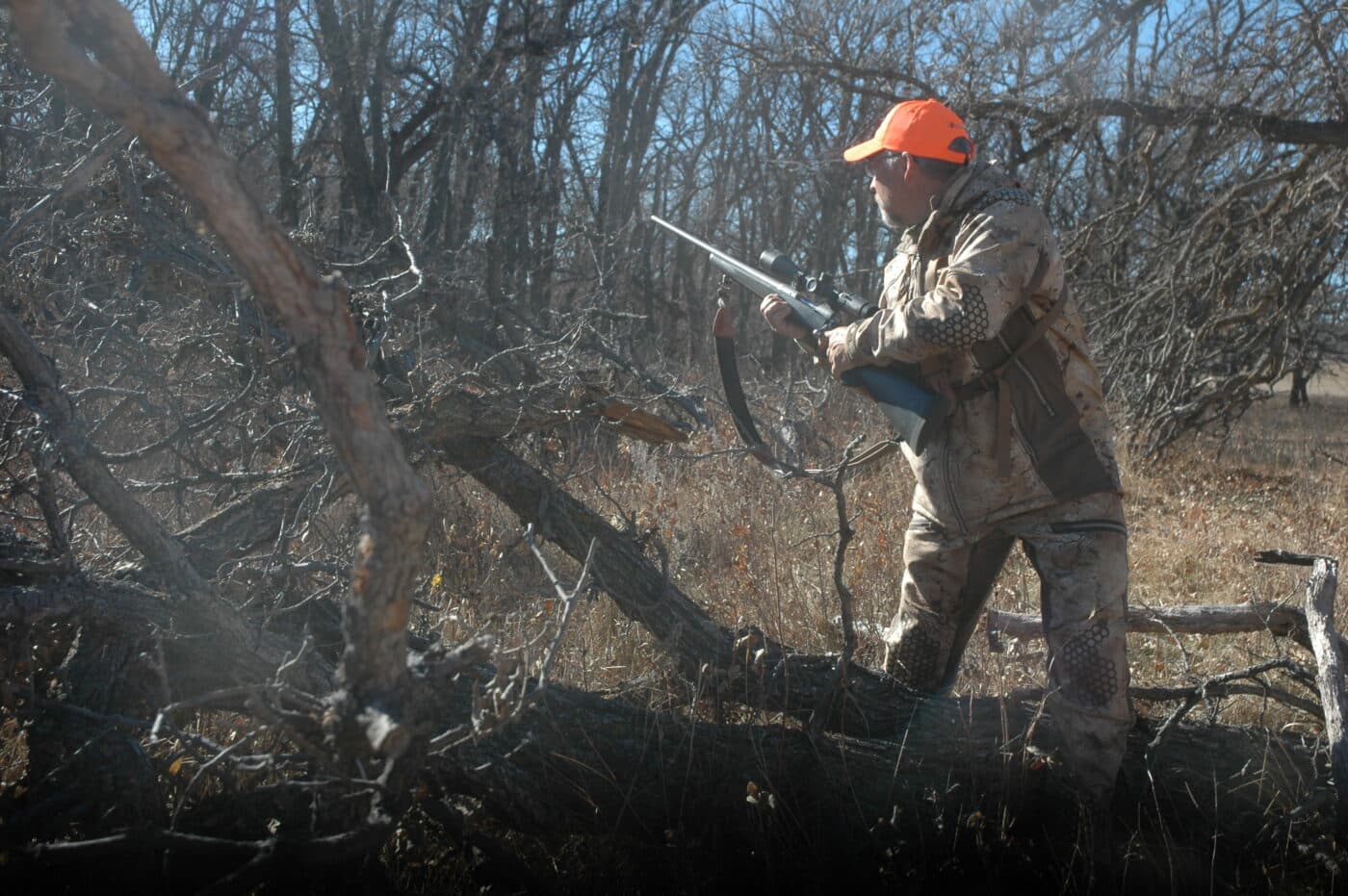
Because we’re all built differently, an ideal stance is hard to pin down. It can vary with shooting style, terrain, even the rifle. In offhand competition, a backward arch of the lumbar spine puts the weight of a match rifle squarely over the hips, a twist of the waist coming to a “stop” with the rifle pointed at the target over feet nearly perpendicular to sight-line. In defensive-style shooting with AR rifles like Springfield’s SAINT, many shooters “square up,” almost facing the threat.
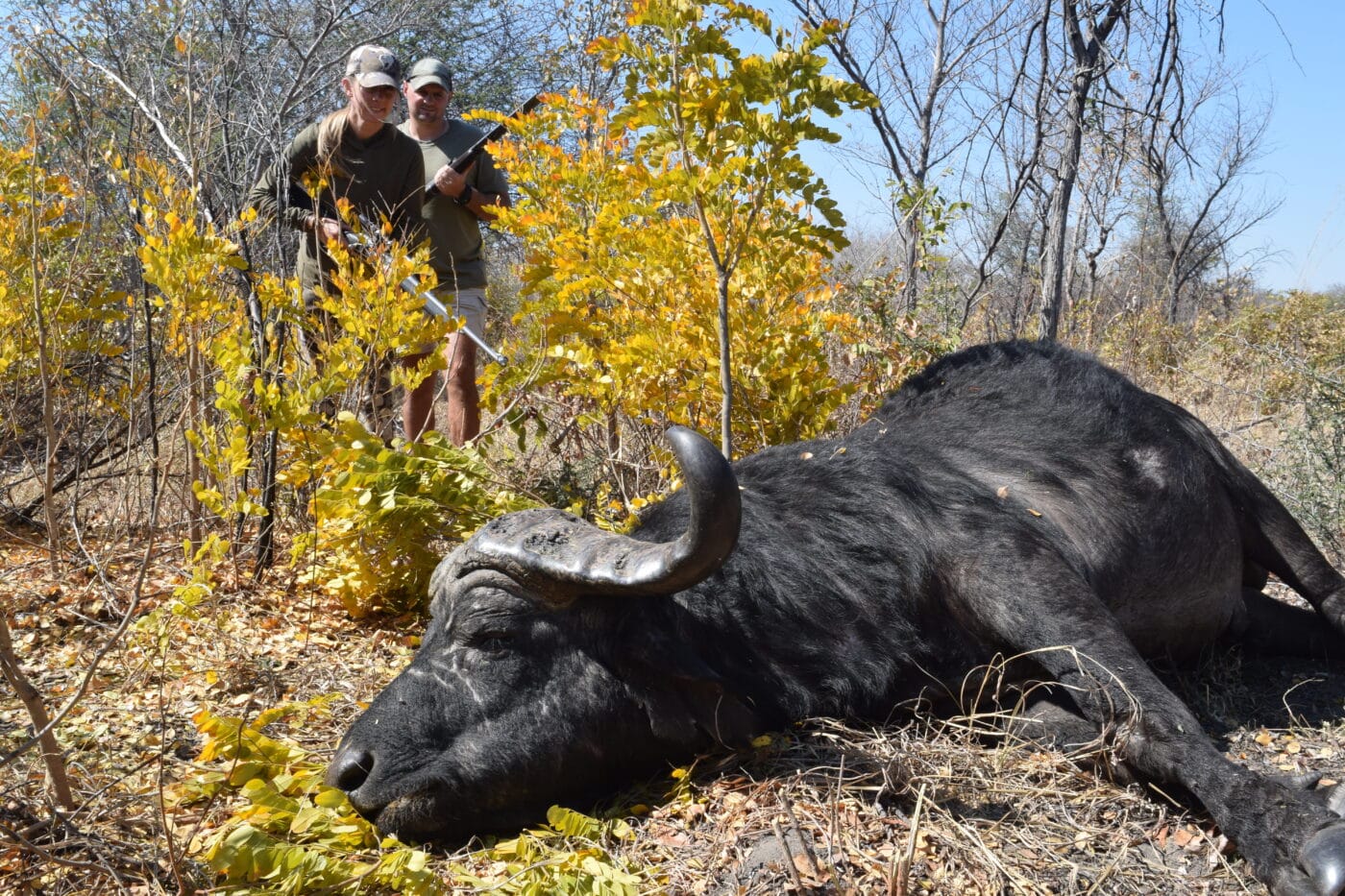
With hunting rifles, I get best offhand results placing my feet shoulder-width apart, a line through my toes at a 30-degree angle to sight-line. Legs bear weight equally, with a bit more pressure on the balls of my feet than on the heels. Knees are not locked. Moving game begs a forward lean, adding weight to the balls of the front, pivot foot. Like a shotgunner setting up for a skeet station, you want natural point of aim to come on target when the shot occurs.
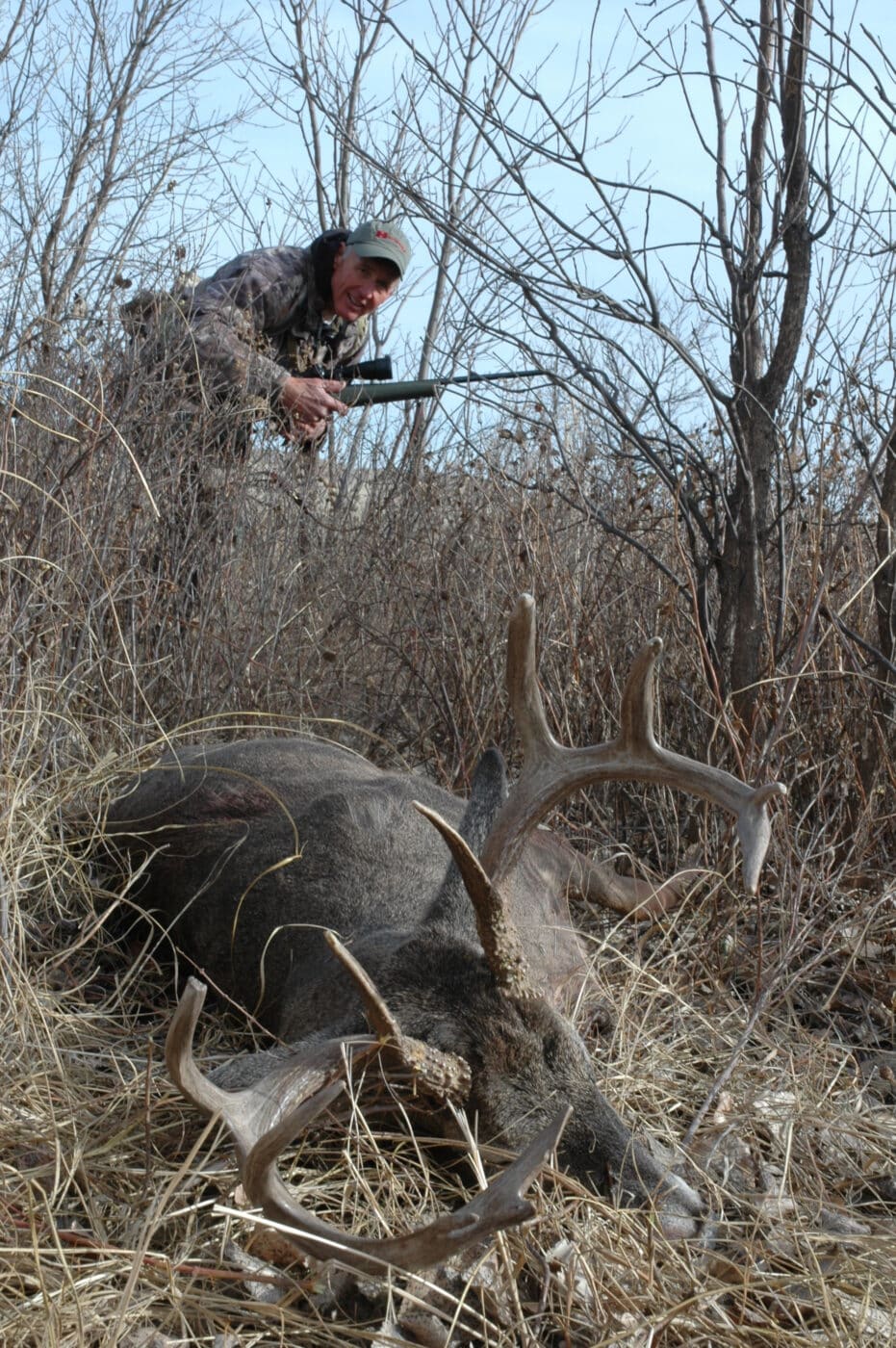
Rifles that set you on your heels in recoil can be controlled with a broader stance. But to ensure against having to step back at the shot, some shooters lean steeply forward. That may be your best option for “stopping” shots or where terrain or brush impedes any shift in position; but where accuracy matters more than speed, a balanced stance pays off. Recoil that urges a step back also delays recovery, whether or not you take that step. A step needn’t retard an aimed follow-up.
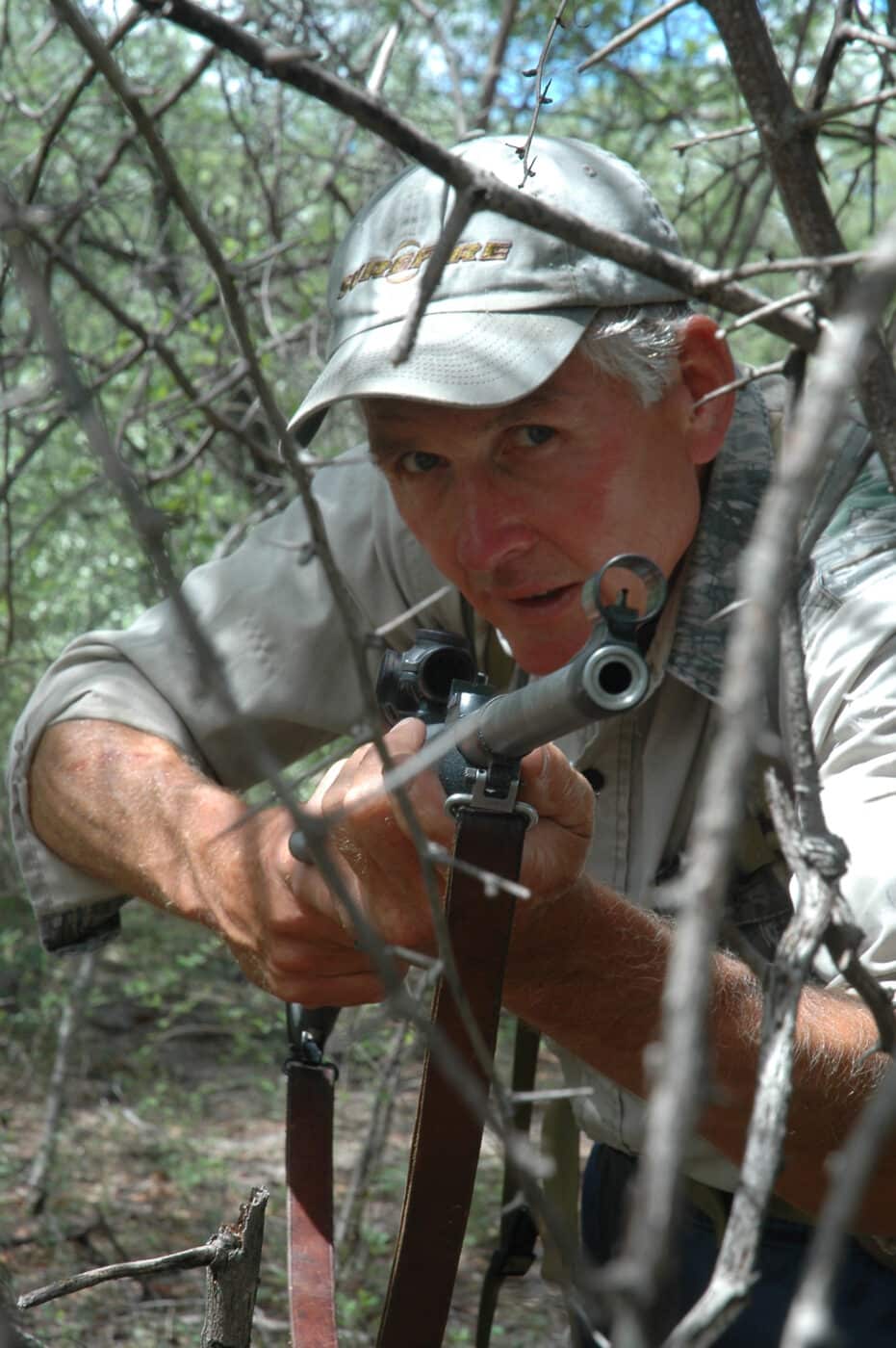
Once, on a timbered steep, I made a fast hit offhand on an elk that appeared suddenly. Loose litter gave way in recoil. I slipped downhill, throwing the muzzle and my next bullet high. I was blessed with a third chance — which I’m not taking for granted.
Proper Prep
Outside competitive circles, few shooters practice offhand. Egos are better served by tiny groups drilled from the bench. Pity. At a sight-in day on a shooting range, I asked 40 hunters who’d just zeroed their rifles to fire one offhand shot at a 6-inch bullseye 100 yards off. Only five hunters hit it! The backer, 22 inches square, had just 30 holes! Such abysmal shooting bodes ill for opening day.
You needn’t burn cartons of ammo to discover and refine your stance for better offhand shooting.
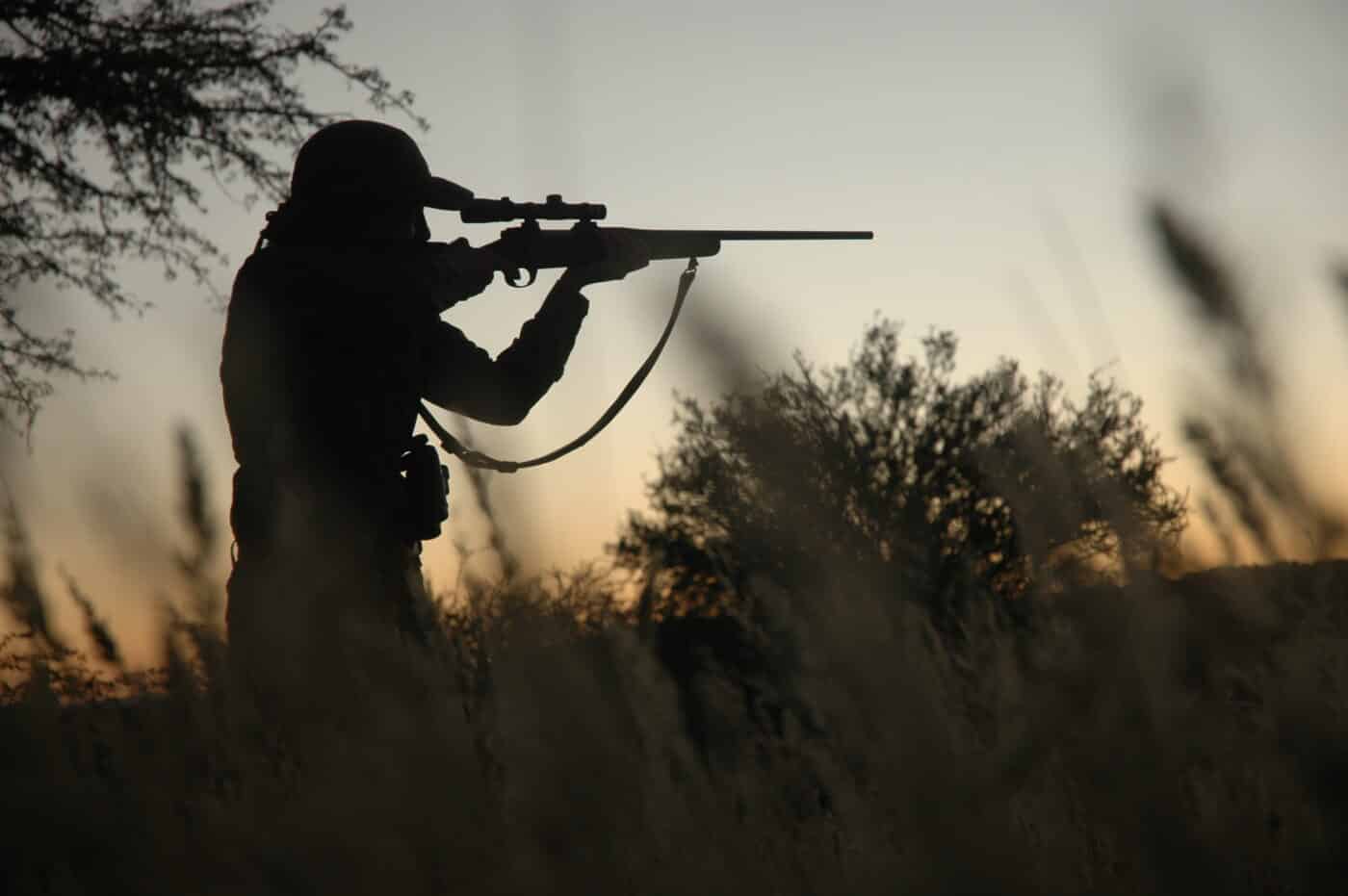
Gary Anderson, a Nebraska farm lad, dry-fired a .22 in practice. After joining the Army (USAMTU) rifle team, he won silver and gold in the Pan American Games. The 1960 Olympics delivered his first National Championship. In 1963 he took smallbore and centerfire gold at the Pan Am Games. A year later he set a world record and won Olympic gold in the 300-meter free rifle event. Another gold and six world records followed, with 12 National Championships and seven World Championships. His book, “Marksmanship,” is mostly on body position. “Shooters obsessed with gear,” Gary told me, “don’t do the required work.”
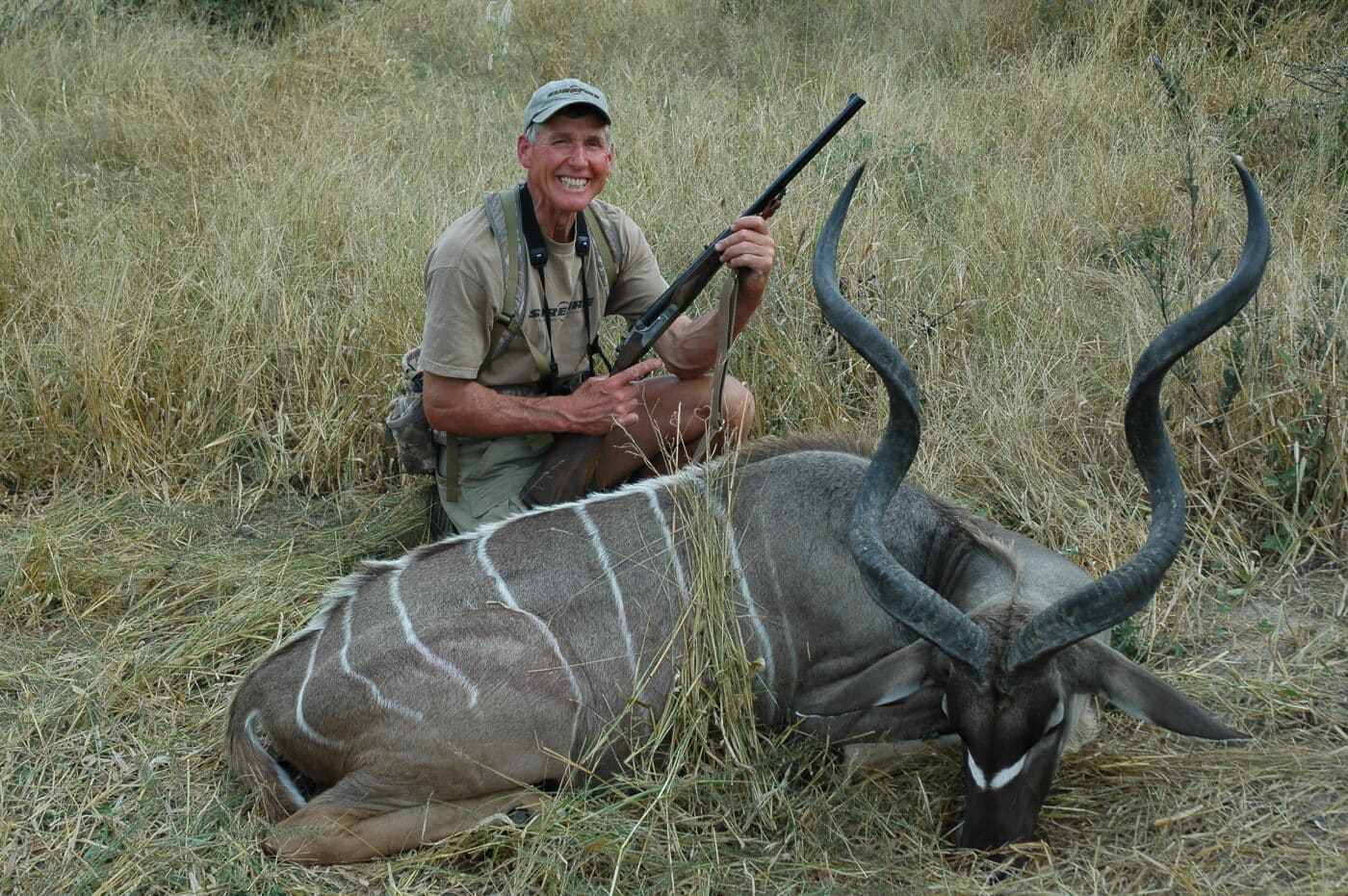
Montanan Lones Wigger distinguished himself in Olympic competition, earning two gold medals and a silver. He set 29 world records, 13 as an individual, and garnered 111 medals in four international rifle competitions. Posted with the USAMTU at Fort Benning, he drilled “three or four days a week, up to 200 shots, four hours a day.” Disciplined practice is work, he assured me. “When you can’t trigger good shots, quit! Don’t practice poor form! No matter the position, the rifle must become an extension of your body. Load your bones, not your muscles. Learn to relax.” An ace offhand shooter, “Wig” practiced that position most “because it’s most difficult.”
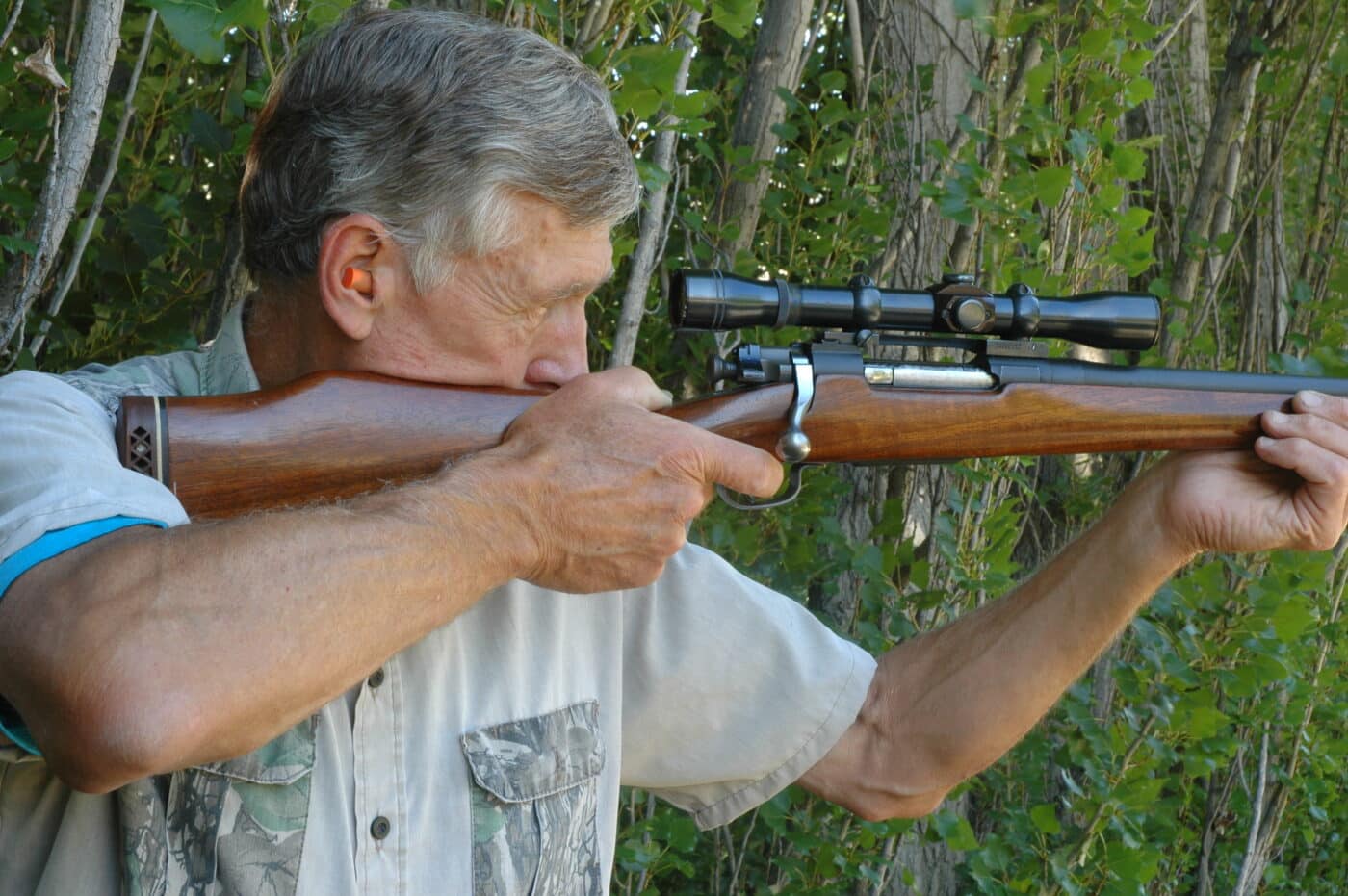
Offhand shooting on a hunt differs from bullseye shooting. But they’ve a common requisite: feet placed so the rifle naturally points at the target when the bullet leaves.
Climbing the Hill
One reason offhand is difficult for many shooters is that they demand too much precision! When you’re out of breath or wind tugs the rifle, you must accept more wobble. Insist on a perfect sight picture, and you’ll tire before you fire. “Center hits are made in your head,” said my first coach, Earl Wickman, tapping ashes from a cigar thick enough to stopper a milk jug. “Beyond the mechanics of position, you must think a hit to make one. But don’t demand the impossible. When you get an acceptable sight picture, send the bullet. Don’t delay a shot to analyze it or gild it, or tell yourself it’s too good to be true.”
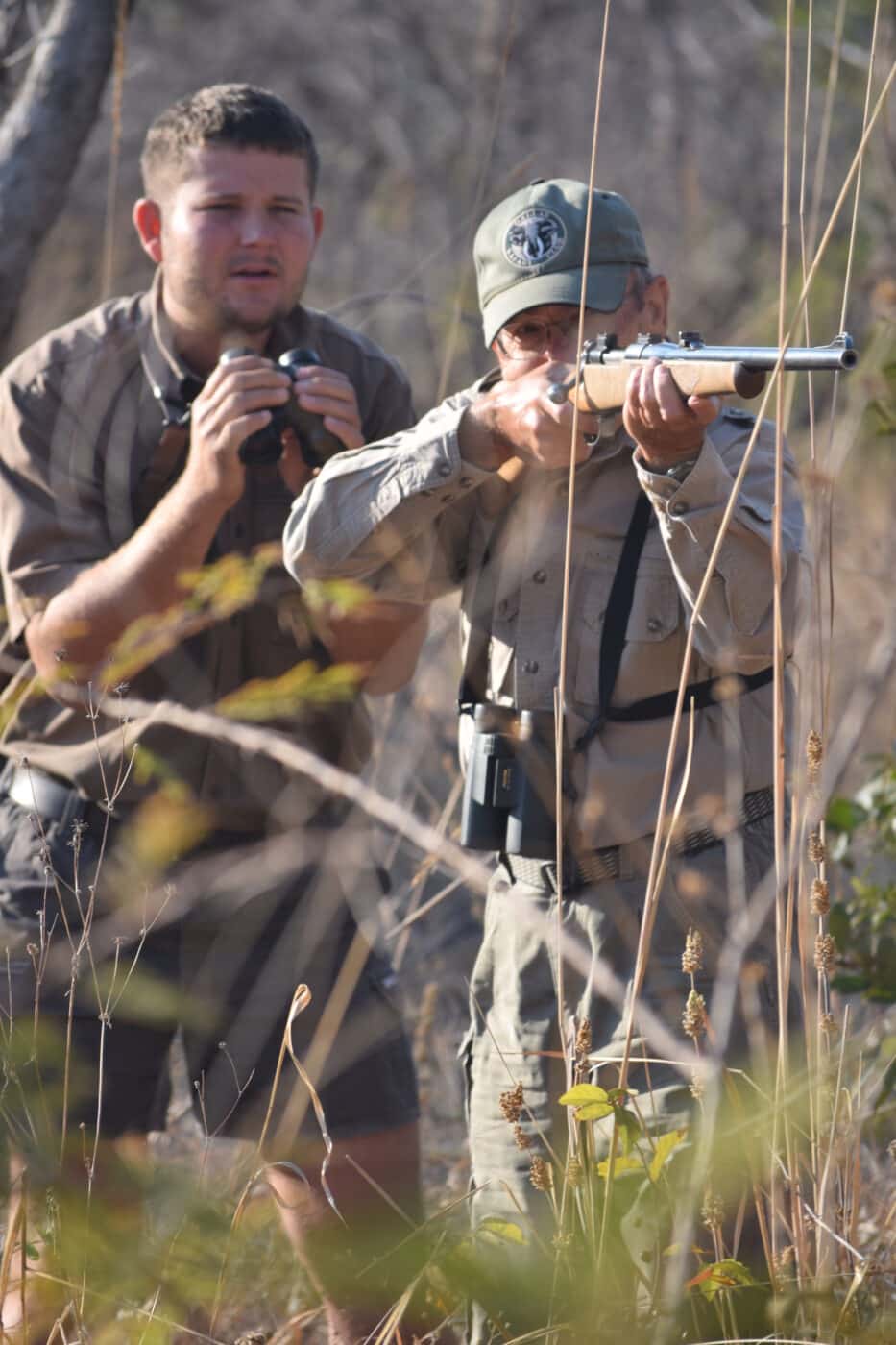
He was right. Offhand, you must contend with a sight picture that is never still, with wobbles of greater amplitude and higher frequency than plague you in more stable positions. The longer you aim, the more desperately you want to breathe. Your pulse speeds up as eye fatigue burns a target image into your brain. Wobbles become more intense as your muscles accede to the rifle’s weight. Your body shakes. You feel the shot unraveling, so you hurry it. And miss.
Try this after aligning your feet: Close your eyes, cheek the rifle, let it settle. Open your eyes. If the sight is right or left of center, lower the rifle, adjust foot position, breathe deeply. Repeat until when you open your eyes the sight appears centered. Given a foundation that puts natural point of aim on target, the sight will spend most of its time there, maximizing odds for a hit.
What if your sight won’t settle? Don’t shoot. You can’t miss or cripple game with a shot unfired.
Editor’s Note: Be sure to check out The Armory Life Forum, where you can comment about our daily articles, as well as just talk guns and gear. Click the “Go To Forum Thread” link below to jump in!
Join the Discussion
Continue Reading
Did you enjoy this article?

 200
200





